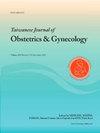Recent advances in cervical cancer treatment: Innovations from early-stage to advanced disease
IF 2
4区 医学
Q2 OBSTETRICS & GYNECOLOGY
引用次数: 0
Abstract
This article provides a comprehensive review of recent advancements in cervical cancer treatment, highlighting significant breakthroughs in managing the disease at various stages. Traditional treatments, such as radical surgery for early-stage disease and concurrent chemoradiation (CCRT) for advanced stages, have dominated clinical practice for decades. However, recent phase III studies have challenged these norms, leading to new treatment paradigms. For early-stage cervical cancer, the LACC trial revealed that minimally invasive surgery results in poorer outcomes compared to open surgery, prompting updates in clinical guidelines. Additionally, the SHAPE trial suggested that simple hysterectomy might be sufficient for low-risk cases, offering comparable oncological outcomes with fewer complications than radical hysterectomy. In locally advanced diseases, the INTERLACE study demonstrated the benefits of adding short-course induction chemotherapy before CCRT, improving progression-free and overall survival rates. Immunotherapy has also emerged as a promising treatment, with trials like KEYNOTE-A18 showing that pembrolizumab combined with CCRT enhances progression-free survival in high-risk cases. For recurrent or metastatic cervical cancer, the KEYNOTE-826 trial highlighted the efficacy of pembrolizumab with chemotherapy, showing significant survival benefits across various patient subgroups. The antibody–drug conjugates tisotumab vedotin and trastuzumab deruxtecan also showed promising results, even if patients have progressed after multiple lines of treatment including immunotherapy. These advances represent a shift towards more personalized and effective treatments for cervical cancer, improving outcomes for patients across different disease statuses.
宫颈癌治疗的最新进展:从早期到晚期疾病的创新
本文全面回顾了宫颈癌治疗的最新进展,重点介绍了在不同阶段管理疾病的重大突破。传统的治疗方法,如早期疾病的根治性手术和晚期的同步放化疗(CCRT),几十年来一直主导着临床实践。然而,最近的III期研究挑战了这些规范,导致了新的治疗范式。对于早期宫颈癌,LACC试验显示微创手术的结果比开放手术差,这促使临床指南的更新。此外,SHAPE试验表明,简单子宫切除术可能足以治疗低风险病例,与根治性子宫切除术相比,其肿瘤预后相当,并发症更少。在局部晚期疾病中,INTERLACE研究证明了在CCRT前增加短期诱导化疗的益处,提高了无进展生存率和总生存率。免疫疗法也已成为一种有前景的治疗方法,KEYNOTE-A18等试验显示,派姆单抗联合CCRT可提高高风险病例的无进展生存期。对于复发或转移性宫颈癌,KEYNOTE-826试验强调了派姆单抗与化疗的疗效,在不同的患者亚组中显示出显著的生存益处。抗体-药物缀合物tisotumab vedotin和曲妥珠单抗deruxtecan也显示出有希望的结果,即使患者在接受包括免疫治疗在内的多种治疗后出现进展。这些进展代表着一种向更加个性化和有效的宫颈癌治疗方法的转变,改善了不同疾病状态患者的预后。
本文章由计算机程序翻译,如有差异,请以英文原文为准。
求助全文
约1分钟内获得全文
求助全文
来源期刊

Taiwanese Journal of Obstetrics & Gynecology
OBSTETRICS & GYNECOLOGY-
CiteScore
3.60
自引率
23.80%
发文量
207
审稿时长
4-8 weeks
期刊介绍:
Taiwanese Journal of Obstetrics and Gynecology is a peer-reviewed journal and open access publishing editorials, reviews, original articles, short communications, case reports, research letters, correspondence and letters to the editor in the field of obstetrics and gynecology.
The aims of the journal are to:
1.Publish cutting-edge, innovative and topical research that addresses screening, diagnosis, management and care in women''s health
2.Deliver evidence-based information
3.Promote the sharing of clinical experience
4.Address women-related health promotion
The journal provides comprehensive coverage of topics in obstetrics & gynecology and women''s health including maternal-fetal medicine, reproductive endocrinology/infertility, and gynecologic oncology. Taiwan Association of Obstetrics and Gynecology.
 求助内容:
求助内容: 应助结果提醒方式:
应助结果提醒方式:


